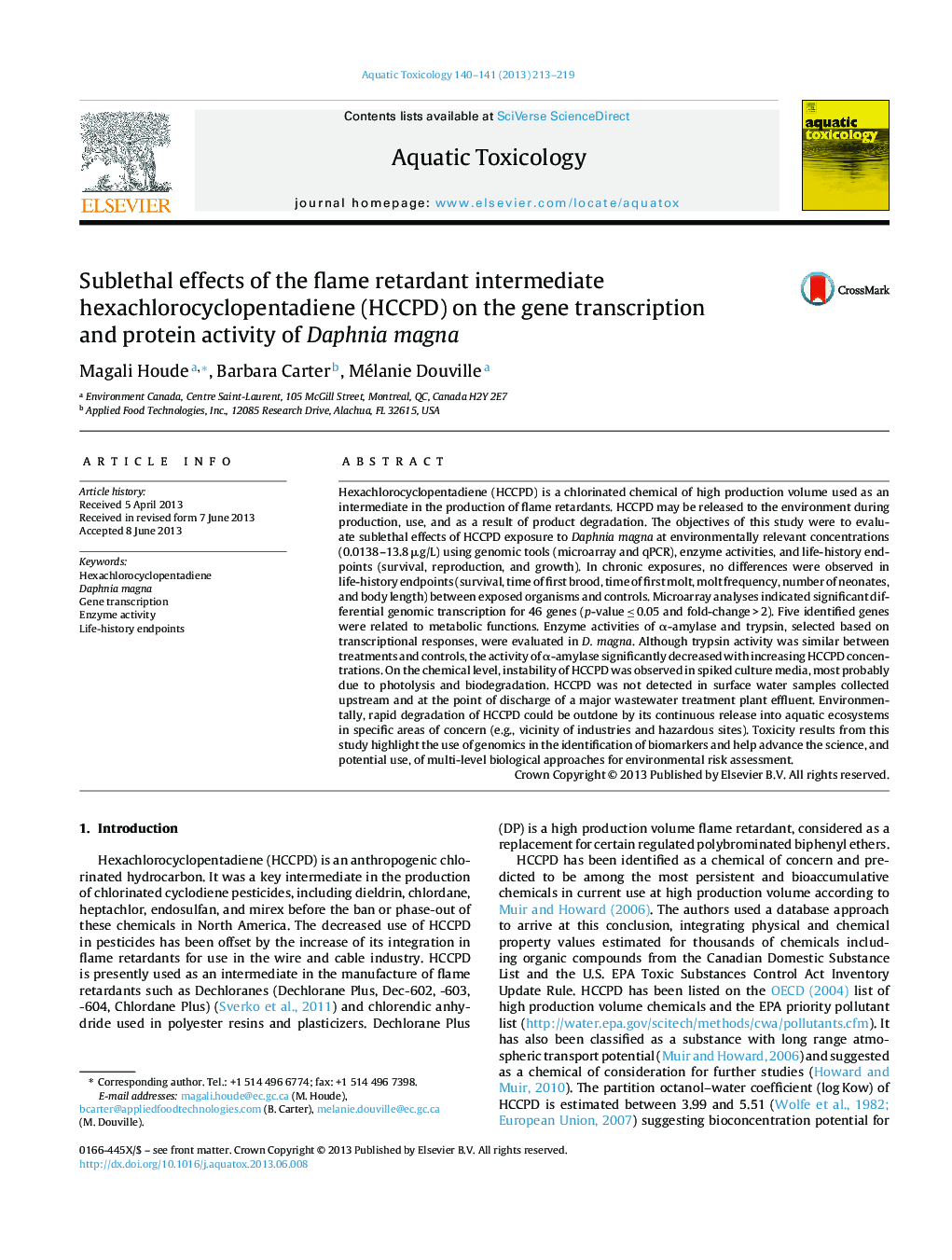| کد مقاله | کد نشریه | سال انتشار | مقاله انگلیسی | نسخه تمام متن |
|---|---|---|---|---|
| 6382516 | 1625962 | 2013 | 7 صفحه PDF | دانلود رایگان |
عنوان انگلیسی مقاله ISI
Sublethal effects of the flame retardant intermediate hexachlorocyclopentadiene (HCCPD) on the gene transcription and protein activity of Daphnia magna
دانلود مقاله + سفارش ترجمه
دانلود مقاله ISI انگلیسی
رایگان برای ایرانیان
کلمات کلیدی
موضوعات مرتبط
علوم زیستی و بیوفناوری
علوم کشاورزی و بیولوژیک
علوم آبزیان
پیش نمایش صفحه اول مقاله

چکیده انگلیسی
Hexachlorocyclopentadiene (HCCPD) is a chlorinated chemical of high production volume used as an intermediate in the production of flame retardants. HCCPD may be released to the environment during production, use, and as a result of product degradation. The objectives of this study were to evaluate sublethal effects of HCCPD exposure to Daphnia magna at environmentally relevant concentrations (0.0138-13.8 μg/L) using genomic tools (microarray and qPCR), enzyme activities, and life-history endpoints (survival, reproduction, and growth). In chronic exposures, no differences were observed in life-history endpoints (survival, time of first brood, time of first molt, molt frequency, number of neonates, and body length) between exposed organisms and controls. Microarray analyses indicated significant differential genomic transcription for 46 genes (p-value â¤Â 0.05 and fold-change > 2). Five identified genes were related to metabolic functions. Enzyme activities of α-amylase and trypsin, selected based on transcriptional responses, were evaluated in D. magna. Although trypsin activity was similar between treatments and controls, the activity of α-amylase significantly decreased with increasing HCCPD concentrations. On the chemical level, instability of HCCPD was observed in spiked culture media, most probably due to photolysis and biodegradation. HCCPD was not detected in surface water samples collected upstream and at the point of discharge of a major wastewater treatment plant effluent. Environmentally, rapid degradation of HCCPD could be outdone by its continuous release into aquatic ecosystems in specific areas of concern (e.g., vicinity of industries and hazardous sites). Toxicity results from this study highlight the use of genomics in the identification of biomarkers and help advance the science, and potential use, of multi-level biological approaches for environmental risk assessment.
ناشر
Database: Elsevier - ScienceDirect (ساینس دایرکت)
Journal: Aquatic Toxicology - Volumes 140â141, 15 September 2013, Pages 213-219
Journal: Aquatic Toxicology - Volumes 140â141, 15 September 2013, Pages 213-219
نویسندگان
Magali Houde, Barbara Carter, Mélanie Douville,